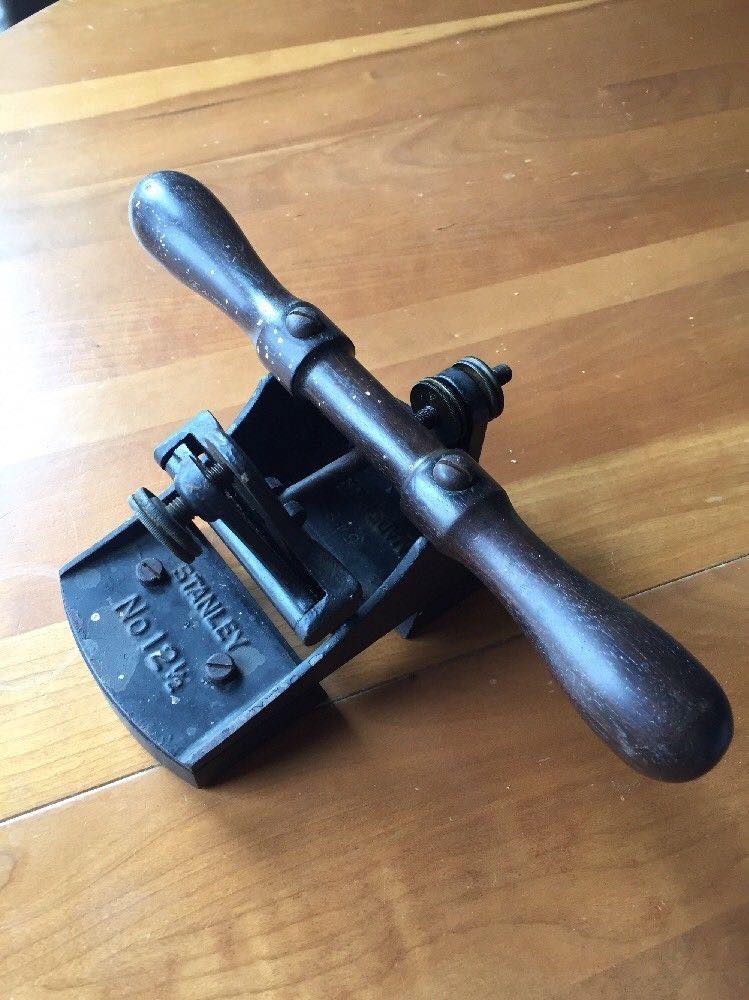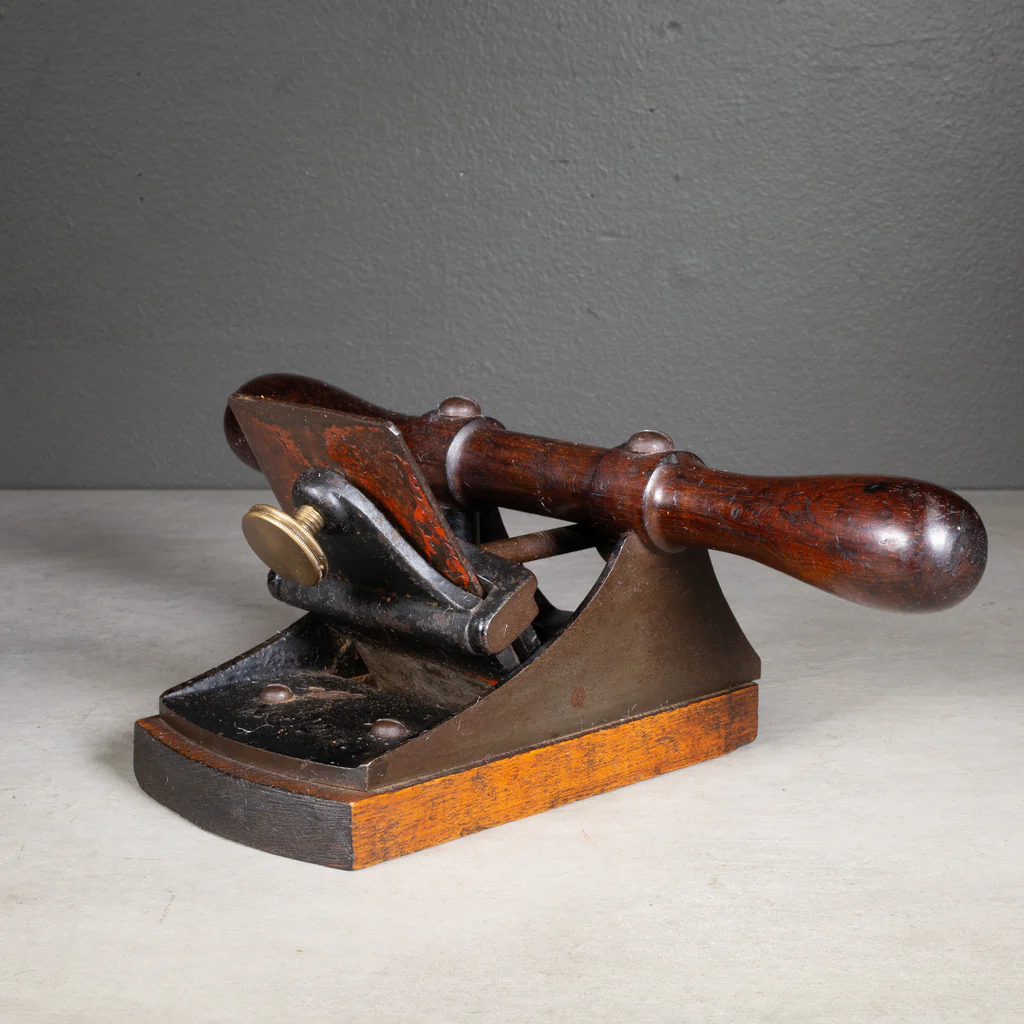A Curious Relic With Surgical Precision
At first glance, this tool looks like a compact contraption from another century: a cast-iron body, twin turned wooden handles, and a slim blade clamped nearly upright. It feels cold and unyielding in the hand, yet it was designed for one of woodworking’s most delicate jobs. This is the Stanley No. 12½ (and its close cousin, the No. 12¼) veneer scraper plane—a specialist tool built to make thin wood veneers glass-smooth, erase glue squeeze-out, and rescue high-end furniture finishes without tearing a fiber. If you’ve ever wondered how cabinetmakers achieved that jewel-like sheen on tabletops before sandpaper grits ran into the hundreds, the answer often sat right here.
What Exactly Is a Veneer Scraper Plane?
Think of veneer as a paper-thin skin of beautiful wood laid over a stable core. It looks luxurious, but it’s fragile. Standard bench planes can dig under the grain and peel it up like a sticker. Enter the veneer scraper plane. Instead of slicing, it scrapes with a steel blade set almost vertical—typically around 80–85 degrees. That steep attack angle shears off wispy shavings, leveling bumps and hardened glue without grabbing the surface. The result is a flawless, ripple-free finish that’s ready for polish.

How the Stanley No. 12½ Was Built to Win
Stanley’s No. 12½ is the refined model in the family. Here’s why serious furniture makers prized it:
- Cast-iron sole: Dead flat and rigid, ideal for keeping pressure even across wide panels.
- Twin hardwood handles: A handle at each end lets you push with control from both sides—think of it as a two-handed violin bow for wood.
- Adjustable scraper blade: A thin, high-carbon blade is clamped at a near-upright angle. Micro-adjusters (on later versions) help dial in bite depth.
- Broad mouth: The open throat lets curls flow out cleanly without clogging.
Many examples are clearly marked “STANLEY No. 12½” (or No. 12¼, a variant), making identification straightforward.
Scraper Plane vs. Spokeshave: Know the Difference
They may look like cousins, but they don’t do the same job. A spokeshave has a short sole and a low-angle blade meant for shaping curves—chair spindles, handrails, wheel spokes. The veneer scraper plane has a flat, wide sole and a nearly vertical blade meant for flattening and finishing. If a spokeshave is a sculptor’s chisel, the veneer scraper plane is a conservator’s scalpel.
Where This Tool Shines in the Workshop
- Flattening veneered tabletops after glue-up without risking tear-through.
- Removing dried glue lines or squeeze-out that would smear under sandpaper.
- Leveling inlays and marquetry, keeping contrasting woods flush without color contamination.
- Refinishing antiques, where sanding would thin the veneer dangerously.
- Smoothing tricky grain (quilted maple, crotch mahogany, bird’s-eye) where ordinary planes misbehave.
Video : Stanley No. 12 Veneer Scraper Explained and Road Tested.
How to Tune the Blade for Silky Shavings
A scraper plane is only as good as its edge. Here’s a simple tune-up that pays off immediately:
- Joint the edge square: File the scraper’s cutting edge dead straight at 90°.
- Hone both faces: Polish the edge and face up through fine stones; aim for a mirror sheen.
- Turn a tiny burr: Using a hardened burnisher, roll a consistent, minimal hook along the edge—think barely-there. Too much burr makes the cut aggressive and grabby.
- Set the angle: Clamp the blade at the plane’s steep bed (around 80–85°). Start with a shallow projection.
- Test on scrap veneer: You want thin, curly shavings—not dust and not gouges. Adjust the projection in hair-thin increments.
Using the 12½ Without Drama
- Light, even pressure: Hold both handles and keep the body flat. Let the tool glide—don’t force it.
- Work with the figure: Scrape diagonally, then cross-diagonally, finishing with with-the-grain passes.
- Watch the heat: Scraping builds friction. If the surface warms, pause to avoid softening hide glue on antique work.
- Check often: A few gentle strokes can level more than you expect.
Care, Storage, and Rust Control
These planes were made for decades of use—but only if you treat them like instruments.
- Keep the sole waxed for glide and corrosion resistance.
- Store the blade separate or retracted so you don’t blunt the burr.
- Disassemble and dry the tool after humid jobs; moisture hides under the blade clamp.
- Oil the screws and adjusters sparingly to preserve smooth action without attracting dust.

Dating and Collectibility: What to Look For
Collectors love the No. 12 series because each variation tells a manufacturing story from the late 19th to early 20th century. Desirable traits include:
- Crisp “STANLEY No. 12½” casting marks with original japanning intact.
- Matching hardwood handles with tight ferrules and no cracks.
- Unpitted sole that still checks flat.
- Original blade with full length; replacements are fine for users but reduce collector value.
The No. 12¼ and 12½ are often preferred by users thanks to their broader soles and stable feel on large surfaces.
Common Mistakes (And Easy Fixes)
- Over-aggressive burr → Causes chatter and digging. Back off, re-burnish lightly.
- Too much projection → Leaves tracks. Retract the blade and sneak up on the cut.
- Uneven pressure → Creates low spots. Keep both hands balanced and the body flat.
- Sanding after scraping → Can re-introduce waves. If you must sand, use a hard block and very light passes.
Modern Alternatives—and Why This Classic Still Wins
Yes, you can buy card scrapers, cabinet scrapers, and even modern versions with composite bodies. They’re great. But the 12½ offers a rare combination: the stability of a flat, heavy sole and the control of two handles. When you’re leveling a veneered table that took you weeks to build (or you’re preserving an heirloom), that extra stability is priceless.
Video : Stanley No. 12 Veneer scraper
Why This “Odd” Tool Deserves a Place on Your Bench
In an age of power sanders and orbital polishers, the veneer scraper plane might feel quaint. Yet it solves problems machines often create: dish-outs, swirl marks, overheated finishes, and torn grain. It’s quiet, precise, and deeply satisfying to use—like hearing a record on vinyl after years of compressed audio. Once you feel that whisper-thin shaving curl from the mouth, you’ll understand why cabinetmakers swore by it.
Conclusion: A Small Tool With a Big Reputation
The Stanley No. 12½ veneer scraper plane may look simple, but it’s the product of a brilliantly focused idea: remove only what you must, exactly where you must, and leave the surface ready to glow. Made for a time when craftsmanship met ingenuity, it still excels at the same mission today—flattening, refining, and protecting delicate veneer with grace. Learn to set the burr, keep the sole true, and move with patience. You’ll see why this compact classic continues to earn its spot in fine shops and on the benches of restorers who know: sometimes the quietest tool does the most important work.